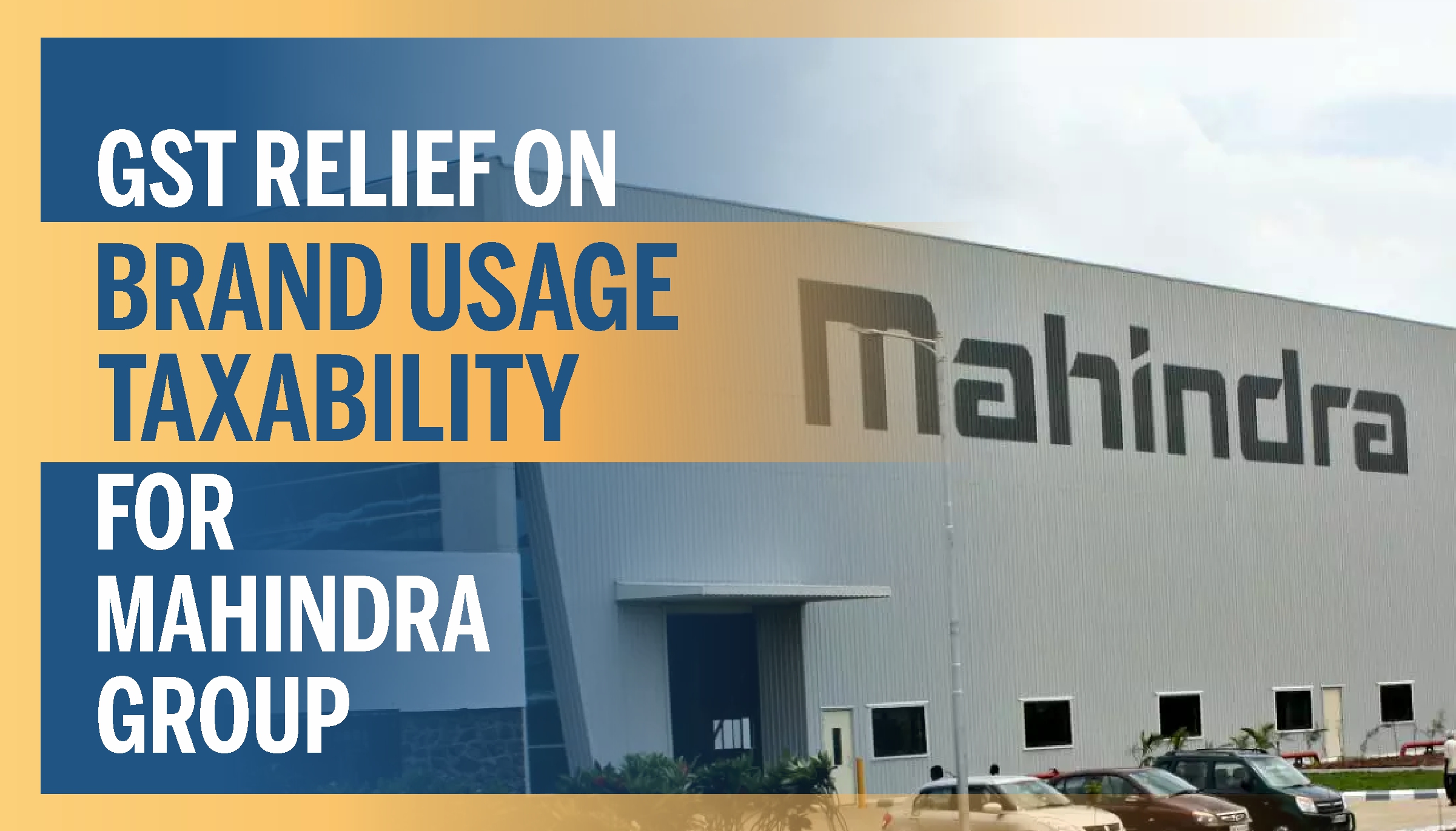GST Relief on Brand Usage Taxability for Mahindra Group

In a significant victory for Anand Mahindra, the GST Adjudicating Authority on April 21, 2025, rescinded ₹115.82 crore of the ₹146 crore tax demand originally raised against Mahindra & Mahindra for permitting its group companies to use the “Mahindra” brand name and logo. The Authority upheld only ₹31 crore in tax liability and imposed a penalty of ₹31.35 crore, creating a nuanced precedent on the brand usage taxability across corporate groups.
Background of the Dispute
In August 2024, the GST Department issued a show‑cause notice covering the 2017–23 period, demanding ₹147 crore from M&M. The Department contended that charging a nominal fee of ₹1 lakh per annum for trademark use was a deliberate undervaluation and that any related‑party transaction—irrespective of consideration—constitutes a taxable supply under Section 7 of the CGST Act. M&M appealed, arguing that its group companies, which claimed full Input Tax Credit (ITC), effectively discharged the tax burden, leaving no incremental benefit to the exchequer.
Evolving Landscape of Taxability on Brand Usage
The crux of brand usage taxability lies in whether a related‑party arrangement constitutes a “supply” and, if so, how its value is determined under Rule 28 of the CGST Rules. Rule 28(1) mandates that supplies between related persons be valued at open market value; the proviso deems the invoice-declared value as open market value when the recipient is eligible for full ITC.
Historically, courts have grappled with this issue under VAT and Service Tax regimes:
-
In Tata Sons Ltd. v. State of Maharashtra (Bombay HC, March 2015), the Court held that royalty for trademark licensing attracts VAT, even when charged between group entities, reinforcing that brand usage commands a taxable value.
-
Conversely, in Subway Systems India Pvt. Ltd. v. State of Maharashtra (Bombay HC, August 2016), the Court distinguished franchise royalties from mere brand use and ruled that VAT could not be levied on permissive use of intangible rights under certain franchise agreements.
These precedents illustrate the fine line between exempt intra‑group arrangements and taxable brand‑licensing services, underscoring why M&M’s ruling carries wide ramifications.
Key Findings in the Mahindra & Mahindra Order
The Authority’s decision clarified two critical points on brand usage taxability within a corporate group:
-
Full‑ITC Scenario: When a subsidiary pays GST on the declared fee and claims ITC, the parent’s invoice value is deemed the open market value. Consequently, the Authority canceled ₹115.82 crore of the demand, reasoning that the exchequer suffered no loss beyond the invoiced amount.
-
Non‑ITC Scenario: For group companies in industries with restricted ITC (e.g., real estate), the Authority adopted a benchmark royalty rate of 0.25% of revenue—mirroring the Tata Sons agreement—to determine the taxable value of brand usage.
By upholding a ₹31 crore liability and matching penalty, the Authority balanced revenue protection against undue tax burden, signaling that mere token fees cannot insulate related‑party brand licensing from scrutiny.
Implications for Industry
This ruling marks a watershed in managing taxability on brand usage for conglomerates:
-
Contractual Clarity: Corporates must explicitly document royalty rates and ITC eligibility in trademark‑licensing agreements to anchor declared values as open market values under Rule 28.
-
ITC Strategy: Entities should assess ITC availability rigorously; full‑ITC recipients enjoy certainty, while non‑ITC sectors must benchmark royalty at arm’s‑length rates.
-
Valuation Discipline: Tax teams must apply Rule 28’s hierarchical valuation rules, supported by market‑comparable benchmarks, to withstand challenges.
-
Litigation Readiness: Both the Department and M&M can appeal, so firms should maintain contemporaneous records—board minutes, contracts, and transfer‑pricing analyses—to defend their positions.
Ultimately, this decision empowers group companies to structure brand‑licensing arrangements with greater confidence, provided they adhere to valuation rules and document ITC outcomes. As more conglomerates license trademarks within their ecosystems, the brand usage taxability will remain under the GST microscope, making this order a critical reference point for tax practitioners and corporate counsels alike.
